Are Raw Grains Healthy?
Are grains good for you? Should you eat grains? Are raw grains healthy? Here’s what you need to know.
Are whole grains good for you? What about raw grains? Are raw grains healthy? What about cooked grains? Are cooked grains healthy?
Many of the health trends these days eliminate grains from the diet. Some people experience digestive trouble, inflammation, or other health issues when eating grains.
On the other hand, research shows numerous benefits from the consumption of grains. And grains are one of the foods in the original diet humans were designed to consume. [i]
Are grains good for you or not?
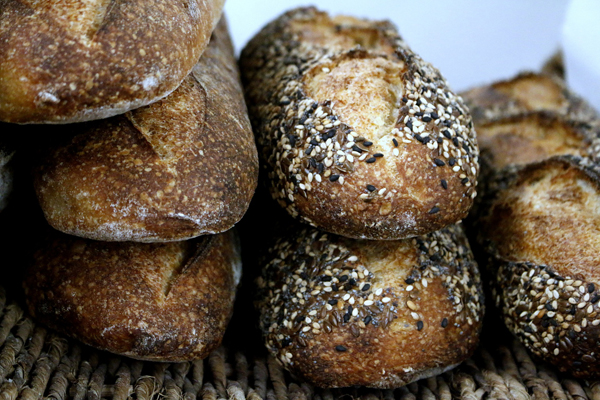
So are grains good for you? Are grains healthy?
Or do grains cause health problems?
To help us understand the answer to those questions, let’s take a look at a couple of other foods.
First, kidney beans.
Kidney beans taste great in minestrone soup, in a three-bean salad, or in chili. And kidney beans are a wonderfully nourishing food. But have you heard the stories in the news of people getting very sick after consuming kidney beans?
Kidney beans naturally contain a toxin called phytohaemagglutinin. This toxin can cause nausea, vomiting, and diarrhea.
Phytohaemagglutinin is inactivated by thorough cooking at a boiling temperature. But if you eat the beans without thoroughly cooking them, you can become very sick. [ii]
Another food that causes problems if improperly prepared are bamboo shoots. Bamboo shoots are a great addition to many recipes, but they also must be properly cooked before consumption. The raw shoots contain toxins that can cause vomiting, diarrhea, headache, a drop in blood pressure, rapid pulse, dizziness, stomach pains, and mental confusion.
So, does that mean that kidney beans and bamboo shoots are unhealthful foods? Not at all! Both kidney beans and bamboo shoots are highly nutritious. When cooked properly they nourish the body and contribute to good health.
There are a number of other foods that need to be prepared properly in order to be nourishing.
Grains are one of them.
Are raw grains healthy?
Is it okay to eat raw grains?
Grains are a staple food around the world and have been since this world began. One reason for this is their high-nutrition content, but another reason is that grains can be stored for many months at a time, thus providing nourishment in times when no other foods are available from the garden or orchard.
What makes healthy raw grains able to be stored for months – even years – when other foods like lettuce, zucchini, nectarines, strawberries, and potatoes cannot be kept for as long?
As a grain matures, the structure and makeup of the grain goes through a number of changes. For example, during maturation, phytic acid is formed in the grain, and the cell walls of the grain change. These changes are very beneficial because they make the grain able to be preserved. (Fresh, immature grains are delicious and nourishing, but immature grains will not keep for more than a few days – which is why we rarely [if ever] see immature grains in the grocery store except in the form of fresh corn-on-the-cob.)
The problem is that the human digestive system cannot digest and utilize grains that have gone through these changes.
Cooking Grains
Thankfully, cooking grains for sufficient time again changes the structure and makeup so that grains can be eaten and healthfully used by the human body.
Better Digestion
Results from scientific experiments show well-cooked grains to be 2 to 12 times more digestible than raw grains. [iii] [iv] [v] [vi] [vii]
The cells of mature grains are enclosed in little natural cellulose envelopes. This enclosure is designed to protect the nutrition in the cells of the grains as they are stored for long periods of time. The enzymes in the human digestive system cannot break open these envelopes; however, the application of heat for a sufficient length of time can open these enclosures.
In addition, the starch in mature grains is composed of long-chain molecules that the human digestive system cannot digest and utilize. They must first be broken down into short-chain dextrins. Long cooking breaks down these long-chain molecules into short-chain dextrins.
When we eat raw grains or grains that have not been cooked sufficiently, the cellulose envelopes in the grains are not opened and the long starch molecules are not broken down and intact molecules then pass through the intestinal wall and enter the general blood circulation. “Some of these [starch] granules travel into and block the smallest arteries called arterioles, and the tiniest of all blood vessels, the capillaries.” [viii] And this can lead to a number of health issues – especially those involving the joints, adrenals, muscles, and/or lymph nodes. Hormone receptors may also be blocked.
Enhanced nutrient availability and absorption
Research shows that the molecular structure of grains greatly affects the availability and utilization of the nutrients in the grains. Cooking not only breaks the cell wall, it also enhances and activates many vitamins and liberates minerals to make them available to the body.
Deactivation of Antinutrients
Antinutrients, such as phytic acid and lectins, are natural compounds found in a variety of foods (especially mature grains and legumes) that can bind to nutrients and prevent their absorption in the intestinal tract. These antinutrients can be effectively reduced by long cooking, thus releasing nutrients for absorption.
When grains are not sufficiently cooked, antinutrients are still active and the absorption of essential nutrients in greatly inhibited. These antinutrients can also harm the lining of the intestines, especially the microvilli. This can lead to a number of health issues including leaky gut syndrome, carbohydrate sensitivity, and insulin resistance.
Wisdom from the past
This fact was first documented in scientific literature in 1968, but the need to properly cook grains was known even before then. In 1905, a book entitled Ministry of Healing states, “Grains . . . should have several hours’ cooking.” [ix]
In a biography written about the same time period, we can read, “Breakfast would consist of some hot cereal, usually a whole-grain cereal–cracked wheat, millet, corn meal, oatmeal, and sometimes homemade hominy, or boiled wheat that had been cooked overnight in the fireless cooker.” [x] (A fireless cooker was a well-insulated box lined with heated soap stone. Food was placed into a pot to which boiling water was added, and then the pot was sealed in the fireless cooker. The fireless cooker could cook grains at a low boil or simmer for several hours and could even bake foods.)
Other Studies
Some studies have found tiny lacunar scars present in brain tissue and some researchers believe these scars to result from the intake of inadequately cooked grains.
In the Medical Hypothesis (1991) 35:85-87, in an article by B. J. Freedman of the Longman Group in the United Kingdom, the theory was again put forth that these scars may have a relationship to partly cooked granules of starch.
How to Cook Healthy Grains
So if raw grains are not healthy, then how should we cook them?
There are three ways in which grains can be prepared so as to be healthful and readily used by the body. Here’s your guide for proper grain preparation.
1. Water and heat
Prolonged exposure to water and continuous heat (temperatures above 158°F [70°C]) will soften and open these cellulose envelopes, break down the long-chain starch molecules (thus preventing them from entering into the blood stream undigested), and reduce antinutrients to healthy levels. [xi] [xii]
(It’s quite fascinating to watch this process through a microscope. First you can see the breakdown into smaller units, then you eventually see the complete dissolution of the starch granules.)
How long does this process take? Laboratory research shows the following:
Grain — Complete Hydrolysis
quinoa – 20 to 25 minutes
amaranth – 30 minutes
quick oats – 30 to 45 minutes
corn meal – 45 minutes
buckwheat – 90 minutes
rolled oats – 90 minutes
corn grits – 1 1/2 to 3 hours
millet – 1 1/2 to 3 hours
rice – 1 1/2 to 3 hours
This may sound like a long time, but a slow cooker makes it very easy. Simply place grains and water in a slow cooker (traditional or Instant pot slow cooker) and cook overnight. When cereal is done, stir to thicken. This method is quite convenient as grains may be cooked unattended, and a delicious warm cereal is ready and waiting to be eaten in the morning.
Grains can also be simmered on the stovetop or baked in the oven in a baking dish with water for the appropriate length of time.
2. Maillard reaction
Besides the heat and water method, grains can also be browned. The browning process causes a chemical reaction known as the maillard reaction. The maillard reaction is what occurs in the baking of bread, waffles, granola (well-browned granola), etc.
Again, this method was used years ago as it was a very nourishing way to eat grains. From a book written in 1905: “Zwieback, or twice-baked bread, is one of the most easily digested and most palatable of foods. Let ordinary raised bread be cut in slices and dried in a warm oven till the last trace of moisture disappears. Then let it be browned slightly all the way through.” [xiii]
3. Dextrinization + cooking
Raw grains can be distributed thinly on a baking sheet, placed in the oven, and browned before cooking to shorten the cooking time. This browning process is called dextrinization. When grains are dextrinized, it begins the process of breaking down the long-chain molecules and subsequent cooking further hydrolyzes the grain so the body can digest it well.
Dextrinization is also beneficial because it causes a slower release of the carbohydrates from the grain into the blood, which, of course, benefits blood sugar control.
I always dextrinize my rice before cooking it. Not only is the rice more healthful this way, but this method produces the nicest, fluffiest rice!
What about instant rice, quick oats, and other “quick-cooking” grains?
Even the so-called “quick-cooking” grains, advertised to be ready for use in five or ten minutes, require a much longer cooking to properly fit them for digestion. These so-called quick-cook grains are simply steamed before grinding, which has the effect to destroy any organisms contained in the grain. Bicarbonate of soda and lime is usually added to help dissolve the albuminoids, and sometimes diastase to aid the conversion of the starch into sugar; but there is nothing in this preparatory process that so alters the chemical nature of the grain as to make it possible to cook it in five or ten minutes and still be properly digested.
Immature Grains
Grains in the milk stage (like corn-on-the-cob) have not yet formed the cellulose envelopes or the long starch molecules; therefore, they do not need to be cooked before being eaten. These immature raw grains are healthy to eat.
Health Benefits of Whole Grains
While raw grains are not healthy, properly cooked, grains are so good for you! Here are just a few of their many amazing health benefits.
1. Whole grains promote the growth of good bacteria in the gut.
Whole grains feed the good bacteria in your gut and naturally promote proper balance of gut bacteria.
2. Whole grains are great sources of protein, fiber, and many other essential nutrients.
In fact, properly cooked, whole grains are some of the most nutrient-rich foods you can eat.
3. Whole grains help with healthy weight loss.
Whole grains are loaded with fiber and other nutrients that help with weight loss. Research shows that eating three servings of whole grain daily can significantly reduce belly fat and help consumers lose more weight overall.
4. Whole grains can help prevent and reverse diabetes.
Studies have linked whole grain intake to lower fasting blood sugar levels and improved insulin sensitivity.
What This Helpful to You?
Have you noticed that there are no ads on this website? Please consider donating to Jennifer’s Kitchen so I can continue to provide ad-free, unbiased, health information.
References
[i] Genesis 1:29
[ii] Rodhouse, J. C., C. A. Haugh, D. Roberts, and R. J. Gilbert. “Red Kidney Bean Poisoning in the UK: An Analysis of 50 Suspected Incidents between 1976 and 1989.” Epidemiology and Infection 105, no. 3 (1990): 485-91.
[iii] Holm, J., Bjorck, I., Asp, N-G. Sjorberg, L.B. and Lundquist, I. (1985). Starch availability in vitro and in viva after flaking, steam cooking and popping of wheat. Journal of Cereal Science 3: 193-206
[iiv] Holm, J., Asp, N-G. and Bjorck, I. (1988) Factors affecting enzymatic degradation of cereal starches in vitro and in vivo. Morton, I.D. (ed) In: Cereals in a European context, Ellis Horwood, 169-187
[v] Holm, J., Lundquist, I., Bjorck, I., Eliassen, A.G. and Asp, N-G. (1987) Degree of starch gelatinisation, digestion rate of starch in vitro, and metabolic response in rats. American Journal of Clinical Nutrition 47:1010-1016
[vi] Kataria.M. Chauhan, D. Punia, Effect of domestic processing and cooking methods on the contents of carbohydrates of amphidiploids, Food Chemistry 36, 1, 1990, 63-72
[vii] Dr. Agatha Thrash, M.D., board certified pathologist, author of 15 books on health, world-renowned expert on natural health remedies with over 66 years of experience in the medical field
[viii] J.Holm, I.Björck, N.-G.Asp, L.-B.Sjöberg, I.Lundquist, “Starch availability in vitro and in vivo after flaking, steam-cooking and popping of wheat”, Journal of Cereal Science 3, no 3, (1985): 193-206.
Ellen White, The Ministry of Healing, 301
[ix] Arthur White, The Later Elmshaven Years: 1905-1915, 394
[x] Wajira Ratnayake, David Jackson, (2008). Chapter 5 Starch Gelatinization. Advances in Food and Nutrition Research. 55. 221-68.
[xi] Daryl Lund, Klaus Lorenz, (2009). Influence of time, temperature, moisture, ingredients, and processing conditions on starch gelatinization. Critical Reviews in Food Science and Nutrition. 20. 249-273.
[xii] Ellen White, The Ministry of Healing, 301
[xiii] Janice Harland, Lynne Garton, (2008). Whole-grain intake as a marker of healthy body weight and adiposity. Public health nutrition, 11(6), 554–563.
See also: Rachel Burton, Geoffrey Fincher, “Evolution and development of cell walls in cereal grains”, Frontiers in plant science 5, no 456. (2014)
You my also like:
Before you go . . .
Did you know that you can eat all this delicious food AND lose weight? You can!
No calorie counting. No portion sizes.
Join my online weight loss program today!

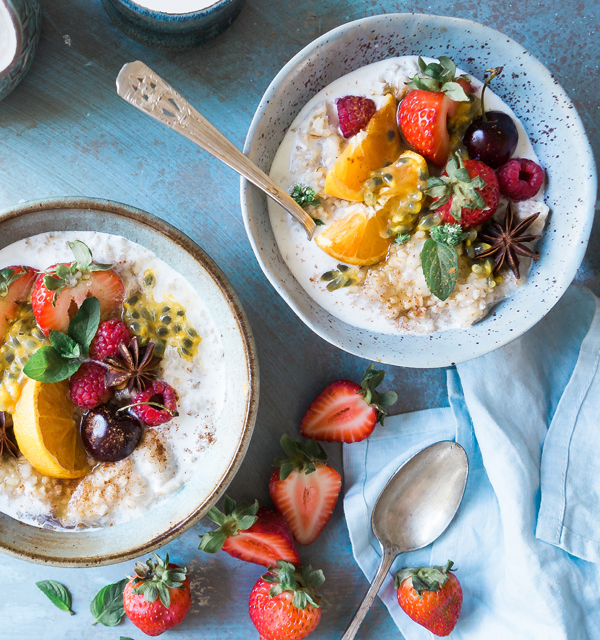

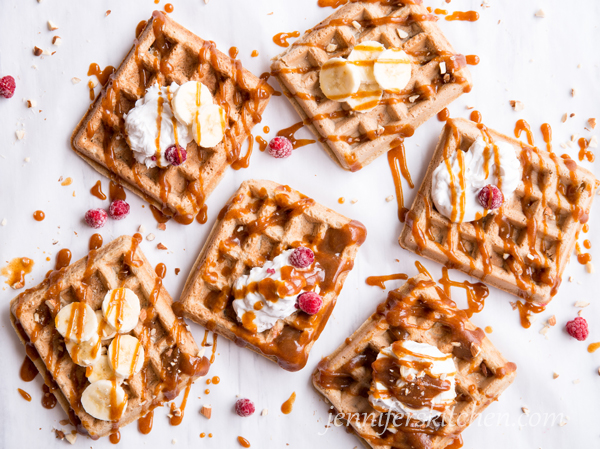


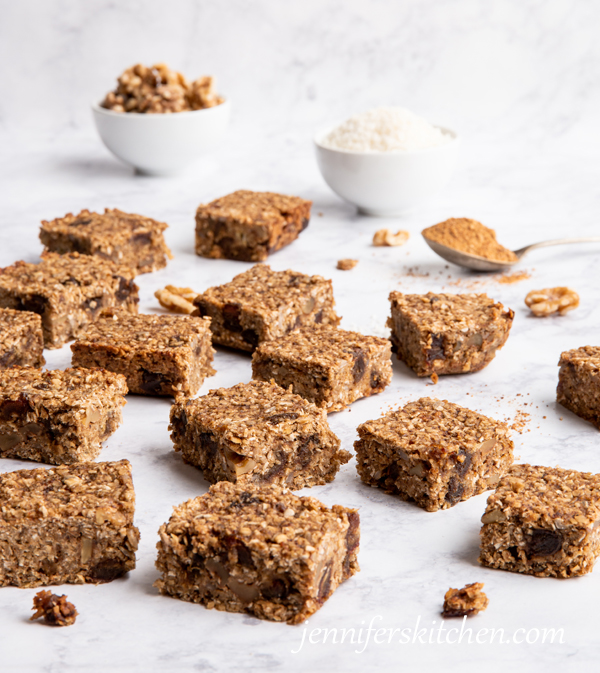
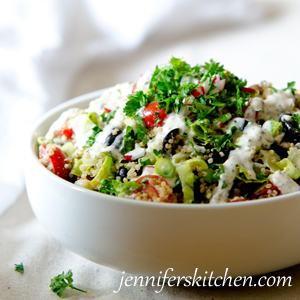

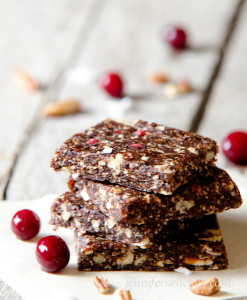
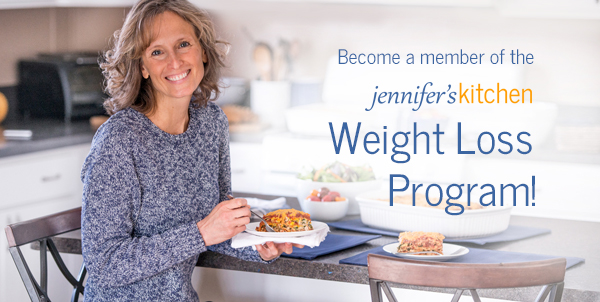
Well written article Jennifer. Informative and practical as always! Thanks very much.
Thank you! Are there benefits, or is it recommended, to sprout whole grains before cooking? It is my habit to pre-soak most grains overnight before cooking but I really don’t know if there is scientific support that spouting makes grains more nutritious.
Hi Marianne,
Great question. Although we can find lots of voices on the internet telling us that we need to soak grains, there is very little substantial evidence that this step offers any benefit. And there is certainly no need/no benefit when grains are cooked properly and sufficiently.
I hope this helps.
Jennifer
Hello Jennifer,
Can you please tell me the ratio of grains to water for cooking in a slow cooker over night for these grains?
Oats
Millet
Buckwheat
Red wheat berries
Thank you!
Michelle
Sure Michelle. You can find those ratios and a lot more helpful information in my post about
How to Cook Hot Cereal in a Crockpot/Slow Cooker..
Let me know if you have any questions!
Jennifer
What is your opinion on things like granola, granola bars, no bake bites made with oats, or even just flour baked into bread? None of these are cooked very long, if at all, and are definitely not boiled.
Hi Kathleen,
Granola and bread would fall under the category of “Maillard Reaction” (Proper Grain Preparation #2 mentioned above). The browning process causes a chemical reaction breaks down the long-chain starch molecules, making the grains easy to digest and usable by the body.
For no-bake bites made with oats, I avoid using raw oats in my no-bake bars/bites/cookies/ etc. and instead use granola (like in these Apricot Energy Bites). Or I don’t use any grains at all (like with these No-Bake Walnut Figs Bites.
I hope that’s helpful.
Jennifer
Aren’t rolled oats technically cooked since they are steamed prior to rolling them out?
Also, I thought buckwheat and quinoa were seeds rather than grains…other than not being terribly palatable if they are not cooked enough, is the nutritional information still the same for properly cooking grains vs seeds?
Great question, Stephanie.
Several years ago when food classifications were invented it was decided that seeds of the grass family would be called grains and seeds of some of the other plants would be called seeds.
This is simply the way it was determined they would be classified.
However, technically, oats, wheat, rye, corn, buckwheat, millet, quinoa, rice, etc. are ALL seeds. (They are the plant’s reproductive unit. If you plant millet grain, it will grow a millet plant because the grain is actually a seed.) And they all have basically the same physical makeup (bran, germ, endosperm, etc.) and chemical makeup (general percentage of carbohydrates, protein, lipids, minerals, fiber, etc.). These factors determine how the body digests them, how the body uses them, as well as their cooking needs.
Concerning oats, yes rolled oats go through a process that exposes them to heat; however, the heat is minimal and not sufficient to make them easily digested.
I hope this helps.
Thank you so much Jennifer. This was very informative. I had recently heard about raw grains but that soaking was ok. I understand now that it isn’t. What about sprouted grains, and particularity oatmeal?
Hi Ellie,
Sprouting grains does slightly reduce some of the anti-nutrients, so it has its benefits. But it doesn’t break down the grain to digestible form like cooking does.
Hope this helps.
Blessings,
Jennifer